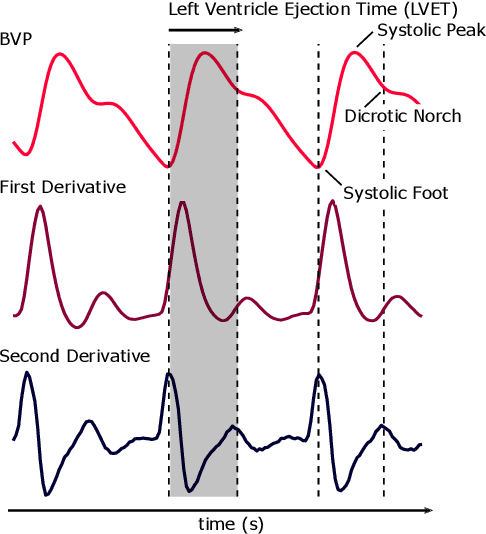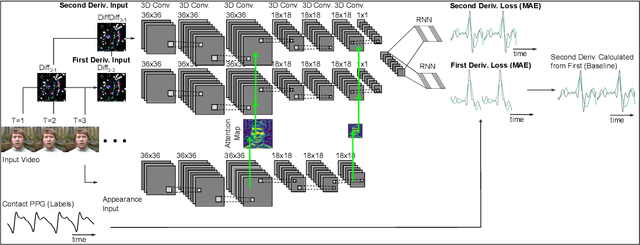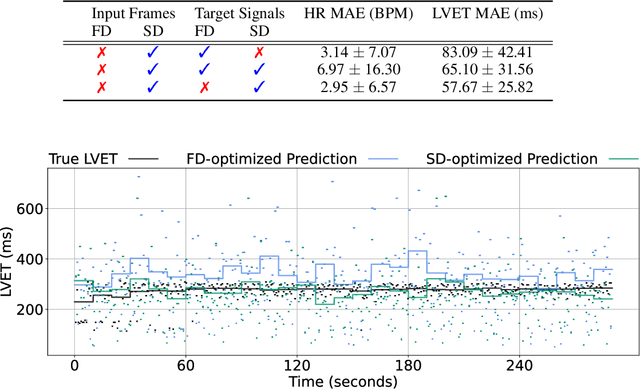Learning Higher-Order Dynamics in Video-Based Cardiac Measurement
Paper and Code
Oct 07, 2021



Computer vision methods typically optimize for first-order dynamics (e.g., optical flow). However, in many cases the properties of interest are subtle variations in higher-order changes, such as acceleration. This is true in the cardiac pulse, where the second derivative can be used as an indicator of blood pressure and arterial disease. Recent developments in camera-based vital sign measurement have shown that cardiac measurements can be recovered with impressive accuracy from videos; however, the majority of research has focused on extracting summary statistics such as heart rate. Less emphasis has been put on the accuracy of waveform morphology that is necessary for many clinically impactful scenarios. In this work, we provide evidence that higher-order dynamics are better estimated by neural models when explicitly optimized for in the loss function. Furthermore, adding second-derivative inputs also improves performance when estimating second-order dynamics. By incorporating the second derivative of both the input frames and the target vital sign signals into the training procedure, our model is better able to estimate left ventricle ejection time (LVET) intervals.
 Add to Chrome
Add to Chrome Add to Firefox
Add to Firefox Add to Edge
Add to Edge